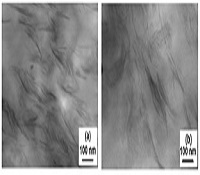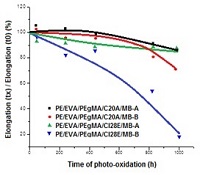
Saul Sanchez-Valdés
Applied Chemistry Research Center (CIQA), Mexico
Title: Photo-stability of low-density polyethylene and ethylene vinyl acetate blends with nanoclay: Towards durable nanocomposites for agricultural fi lms
Biography
Biography: Saul Sanchez-Valdés
Abstract
Polyethylene / ethylene vinyl acetate films are prepared and characterized in the presence of three different organo-modified clays. Two organo-modified clays, C20A and I28E, with different type of surfactant, in terms of polarity and number of tallows, is analyzed. The influence of clay organo-modifier on film morphology, mechanical and photo-oxidative degradation performance is studied. As well as the effect of the incorporation of a maleic anhydride grafted Polyethylene (PEgMA) as compatibilizer. The combined effect of these clays with two different UV-oxidative protection systems for PE/EVA nanostructured films is evaluated. Two types of UV stabilizer combination systems is used. One, designed as MB-A with a heat and light stabilizers of blends of antioxidants (phenolic and metal deactivator, Irgatec NC66) with hindered amines, Tinuvin 494AR and other, designed as MB-B with blends of metal deactivator antioxidant, Irganox MD1024 with hindered amines Tinuvin NOR 371 and benzophenones, Chimasorb 81. A strong influence is observed in the use of compatibilizing agent, type and content of nanoclay in the degree of dispersion as well as in the photo-oxidation behavior. The structure obtained is very dependent on the modified clay used; mostly, intercalated-exfoliated structure is produced. These films can be an attractive option for agricultural greenhouse cover films since the clay enhance the greenhouse effect reducing the passage of infrared radiation from the soil during the night maintaining warmer the film covered atmosphere.



Figure: STEM images of: (a) PE/EVA/C20A (b) PE/EVA/I28E Figure: TGA of PE/EVA/Clay with two types of UV stabilizers Figure: Elongation change with time of photo-oxidation

